Last Updated on April 5, 2024
After fifty years, Monty Python and the Holy Grail is still rightfully hailed by many as one of the all-time greatest comedies, and for a seemingly countless number of reasons: King Arthur’s “horse”, the corpse collector, the Black Knight, the outlandish animations, the rude French knights, an enchanter named Tim, the Knights who say “Ni” a killer rabbit, the Holy Hand Grenade, and so and so on.
But while the end result is historically hilarious, the filmmaking process itself was often pure misery for most involved. Get ready to storm the castle and find out WTF Happened to this Movie!
During the 1960s, British comedy writers and performers Graham Chapman, Terry Jones, John Cleese, Eric Idle, Terry Gilliam and Michael Palin had variously collaborated and found degrees of success before uniting in 1969 to form the group known as Monty Python. This alliance resulted in the BBC sketch comedy series Monty Python’s Flying Circus, which became known for its intelligent but sometimes surreal humor, with memorably absurd moments like the Spanish Inquisition, Spam, the Ministry of Silly Walks, the Lumberjack Song, and of course, Dead Parrot.
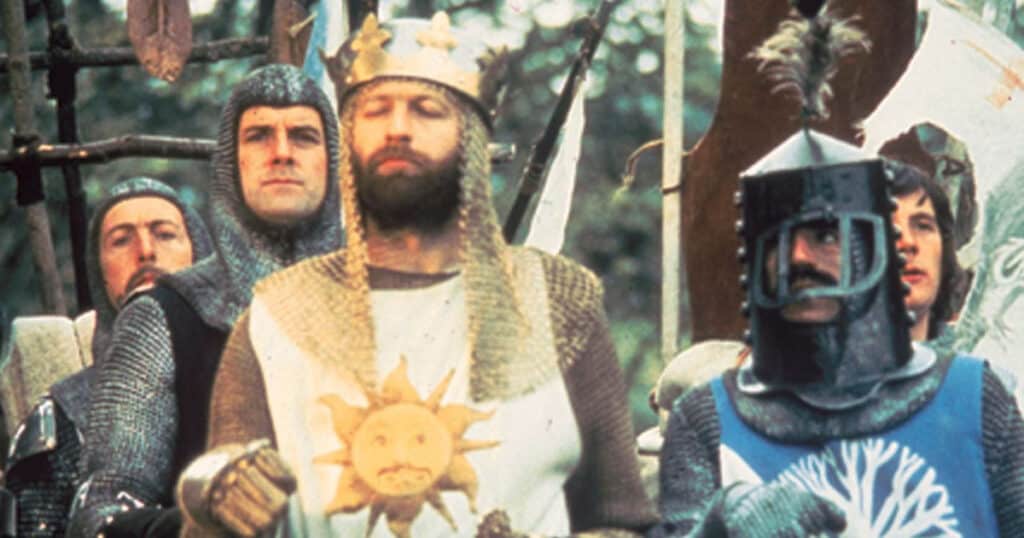
After the third season of Flying Circus, John Cleese departed after becoming disenchanted with television. However, he was interested in movies, so the group started working on a script for a feature-length film. Their idea would satirize the legend of King Arthur and the Knights of the Round Table, with half the story taking place in medieval times and the other half in the modern day, where Arthur would eventually find the Holy Grail in the famous London department store Harrod’s simply because, as Terry Jones claimed, “It’s the store that has everything.” Further script revisions inevitably eliminated nearly all of the present-day material, which was considered “too distracting.” John Cleese later estimated that only 10-15% of the original draft ultimately survived.
Although Monty Python was fairly well known in the UK at the time from TV and stage appearances, that didn’t mean financing would be a breeze. Rather than approaching traditional sources, the group instead gathered funding from what Eric Idle called “people who were trying to lose tax money.” Cobbling together 10 or 20 thousand pounds each from record companies and rock stars like Pink Floyd, Led Zeppelin and Elton John, they eventually collected nearly 230,000 pounds to fund their first feature. And because these investors never expected or even wanted their money back, the filmmakers were mostly free from any creative interference.
In addition to playing several characters in the film, Terry Jones and Terry Gilliam would split directing duties, both making their feature debut. Things started going wrong before they even started. Shortly before departing for filming in Scotland, the group learned that the Scottish Department of the Environment had denied permission to shoot in any of the castles that had already been scouted and prepped, declaring that the script was “incompatible with the dignity of the buildings,” which Idle found particularly ironic considering they were the same places where, as he said, “thousands of Scotsmen had slit each other’s throats.” Gilliam also scoffed at the hypocrisy, saying “These places had been built for torturing and killing people and you couldn’t do a bit of comedy?” Suddenly the privately owned Doune Castle would have to represent most of the movie’s various fortresses, with the filmmakers using clever framing to create the illusion of different interior and exterior locations.
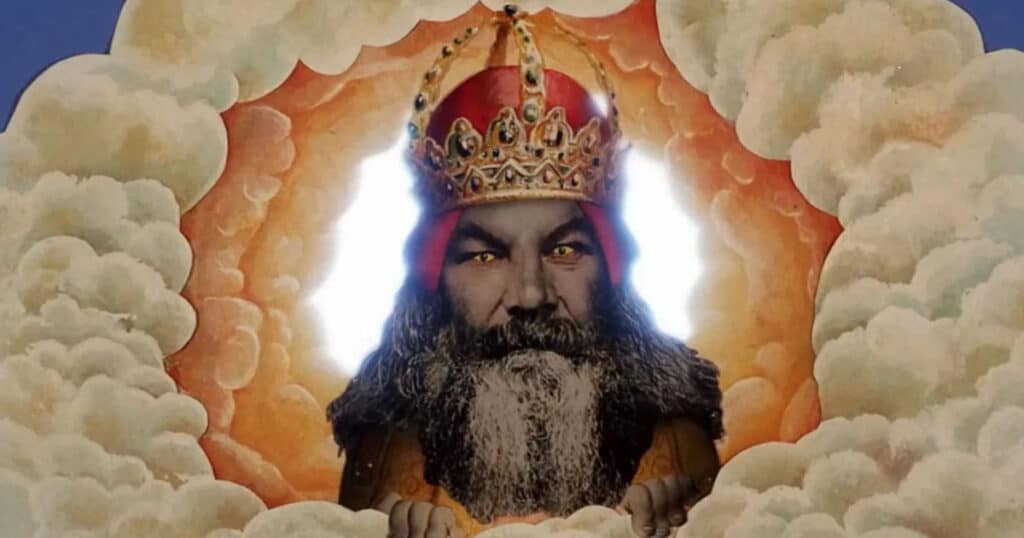
Another bad omen – the production’s camera broke not just on the first day of filming, but on the very first shot. But while a replacement was found, Gilliam carried on, finishing out the first day of filming without sound.
The Scotland weather in May of 1974 was also inhospitable, with chilly temperatures and rainy conditions on most days. This made for a particularly uncomfortable experience for the cast, since the majority of costumes were made of knitted wool designed to resemble chain mail. John Cleese claimed the budget didn’t allow for more than a handful of umbrellas, and by midday, the knights were usually soggy and irritable after trotting around the muddy hillside on their non-horses. To make matters worse, the local hotel didn’t have nearly enough hot water to accommodate the entire cast and crew, causing a mad scramble at the end of each day’s production to get there first.
Those amusing invisible steeds that our heroes “ride” were actually another constraint of the film’s limited budget. Gilliam would have preferred real horses, but the lack of money forced some inventive improvisation, which resulted in one of the movie’s most brilliant gags. The film’s climactic army was another cost-cutting measure, with the horde of soldiers mostly consisting of a couple hundred local university students who were each paid just 2 pounds for the opportunity to charge into interrupted battle.
The dual directors presented different types of complications. Terry Jones was in charge of handling most of the comedy scenes and was determined to capture long exchanges like the dimwitted guards in a single unbroken take whenever possible. This put additional pressure on the performers and required much more preparation and rehearsal before the camera rolled.
Besides the animated sequences, Terry Gilliam was responsible for the scope and visuals, or what Idle called “making it look like a real movie.” Gilliam insisted that getting the atmosphere right would help make the jokes funnier. Still, his obsessive attention to artistic specifics often demanded more and more takes, which aggravated the cast, especially the cantankerous John Cleese, who felt he was being treated more like Gilliam’s animated paper than a human being. In addition, the director’s infatuation with omnipresent smoke eventually prompted Graham Chapman to quantify it on a scale of 1 to 10 Gilliams, ranging from a light mist to an impenetrable cloud.
Thanks to both directors’ combination of perfectionism and inexperience, almost the entire allotted budget for overtime was blown in the first week, and even then, most shooting days still ran much longer than planned. After years in sketch and stage work, Michael Palin wrestled with the multiple takes, non-sequential order and long days of feature filmmaking, and he struggled with trying to perform naturally and consistently, calling the shoot “an appalling process reducing an actor to the role of a machine.”
Another contributing factor to the general suffering was producer Mark Forstater, whose main qualification for the job was that he knew Terry Gilliam. When Forstater tried to cut corners during the shoot by purchasing six-year-old film stock, infuriated cinematographer Terry Bedford tossed it in a stream. Nearly every Python member would come to despise the producer over the project’s entire lifespan — even the famously polite Michael Palin could barely tolerate him. Forstater would long remain on the Python shit list when he later sued the group in 2012, claiming he was owed a larger share of profits from the hit stage adaptation Spamalot.
Further challenges on Holy Grail’s brief shoot were seemingly unlimited. Perhaps most notably, the severity of Graham Chapman’s alcoholism was something of a revelation to the other Pythons during the production, and when he attempted to quit drinking, his confidence promptly was shaken, and he was sometimes found visibly trembling from withdrawal.
Other difficulties included the chaos caused by the Pythons having to play multiple characters, sometimes during the same scenes, which could even have both directors also performing in front of the camera. At one point a realistic wooden cutout representing the castle of Camelot blew away during a sudden cloudburst and had to be recovered and repaired. Tim the Enchanter’s pyrotechnics refused to cooperate on cue, leaving a cranky John Cleese impatiently waiting on a rocky peak for an entire morning. The final scenes shot for the production, of the mud-piling Constitutional Peasants, could only have one take because they had run out of film stock.
Principal photography wrapped on the last day of May 1974, but that was hardly the end of the agony. After assembling the first cut, the film was shown to investors and screened for the public at a West London theater. The response was disastrous. The Pythons swiftly gathered to discuss the feedback and make repairs. Animated sequences felt too frequent and too long. The sound effects for the gory scenes were more sickening than funny. Palin claimed the film was too strong on authenticity and too weak on jokes.
But that was just the start, and the grueling editing and re-editing process took months of tweaks and improvements, all triggering numerous disagreements with the producer and among the Pythons themselves. Much of the sweeping medieval score by Neil Innes was ejected and replaced with jaunty film library music, which better established the comedic tone. Voiceovers were added to clarify the story, some minor reshoots were performed, things were removed and then adding back in. And finally, after thirteen test screenings and subsequent alterations, the movie was eventually, as Eric Idle put it, “dragged toward being funny.”
All that hard work ultimately paid off, although another benefit was the Pythons’ increased popularity. Their first movie And Now For Something Completely Different, a feature-length collection of sketches, made little impression upon its American release in 1972. But in 1974, Monty Python’s Flying Circus began airing on various PBS stations in America and became a cult hit, even prompting a re-release of And Now For Something Completely Different.
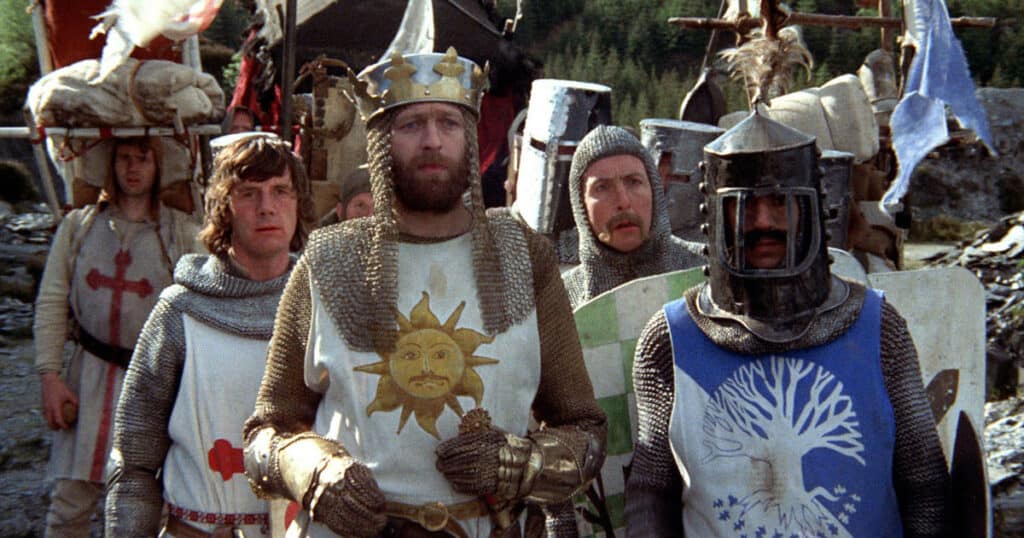
By the time Holy Grail was ready for its New York debut in April 1975, America was primed for more Python. Thousands of fans lined up around the block to see the premiere in New York, and even Led Zeppelin’s Robert Plant and Jimmy Page were in attendance. While critical response to the movie was mixed, that didn’t matter. It went on to earn ten times its budget during its original theatrical run, with re-releases pushing it over $5 million dollars. The Pythons later said they never really make any serious money until Holy Grail opened in America.
In 2005, Eric Idle adapted the film into the Tony-winning stage musical Spamalot, which as of now is still running in revival on Broadway. The musical, along with Holy Grail’s various home video releases and other merchandise, has generated hundreds of millions in revenue. It has been estimated that the original investors have seen more than a 6000 percent return on their money.
By now, we all know the lasting legacy of Monty Python and the Holy Grail. The Pythons themselves may or may not have actually liked each other much, based on recent online interactions between the surviving members. However, their first feature-length effort still made a significant cultural impact. Even after half a century, it remains one of the most quoted and instantly recognizable comedies in history and is often justifiably ranked near the top of polls and lists of the all-time greatest comedies. Doune Castle in Scotland is a popular tourist destination thanks to the movie. Even the real King himself, Elvis Presley, was allegedly a big fan. The Pythons made two further films together, Life of Brian and The Meaning of Life, but while they were financially successful, neither has achieved quite the same levels of fame and appreciation as King Arthur’s farcical quest.
When making Holy Grail, the Pythons may not entirely have known what they were doing at the time and innovated through their budgetary limitations, suffered the cold, muddy misery of filming their first feature, and endured the exhausting editing phase, but none of that stopped them from riding in on their coconuts and storming the world.






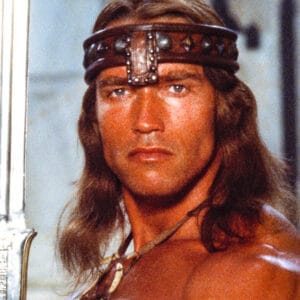
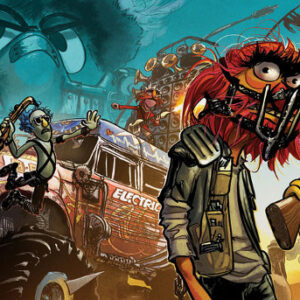
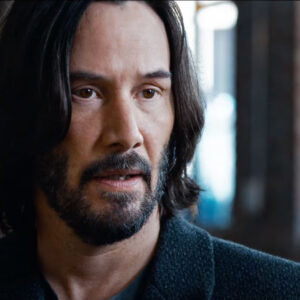

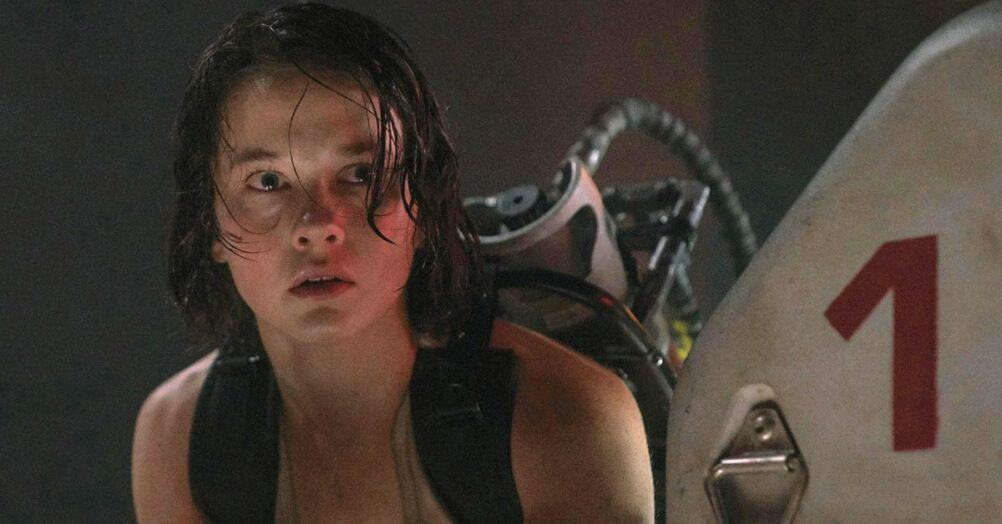


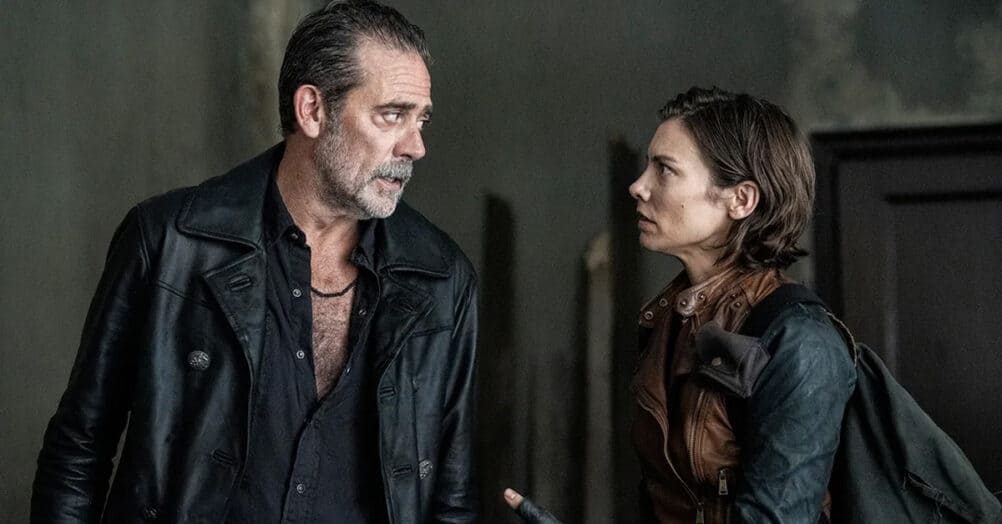
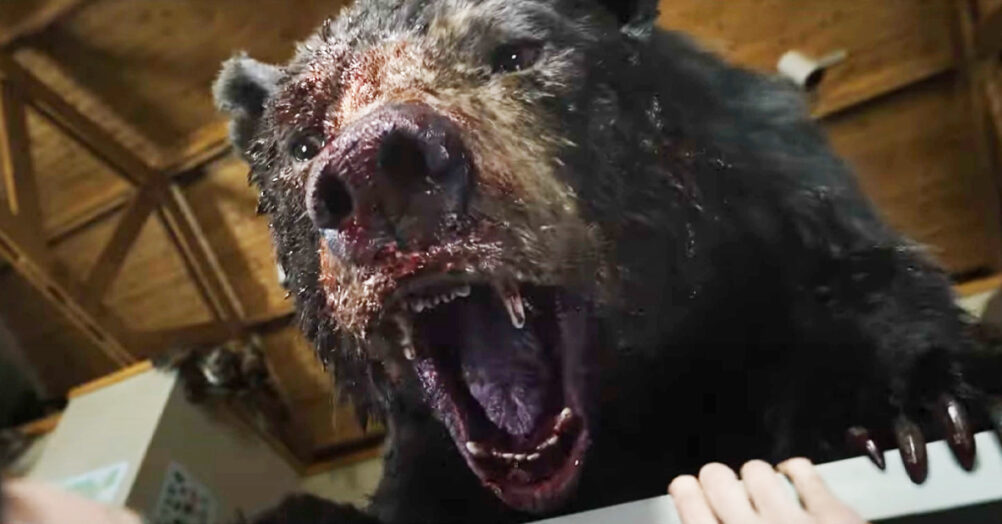




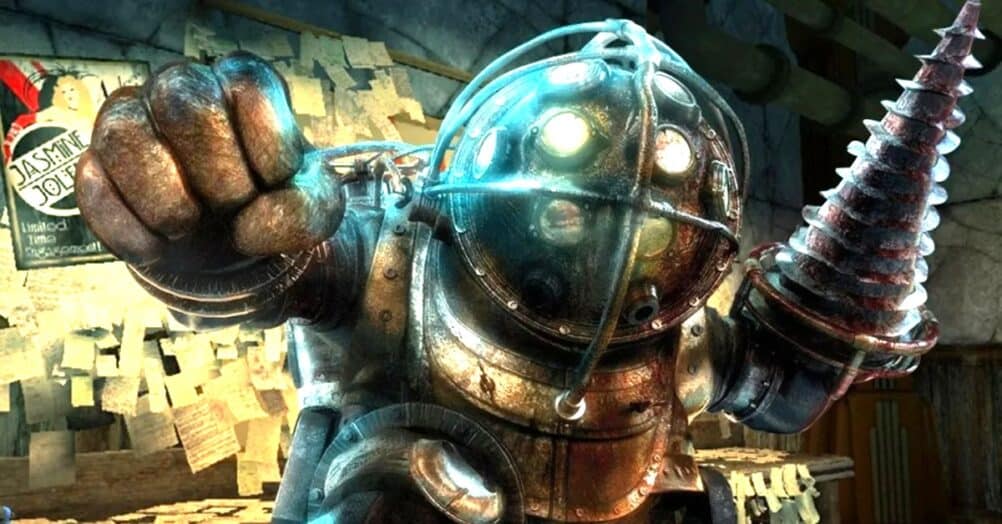
Follow the JOBLO MOVIE NETWORK
Follow us on YOUTUBE
Follow ARROW IN THE HEAD
Follow AITH on YOUTUBE